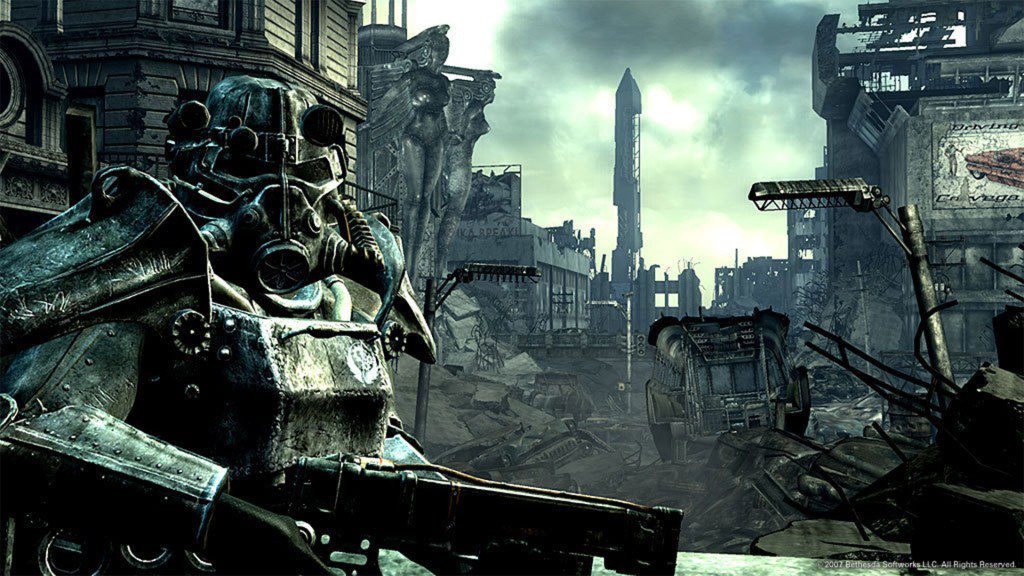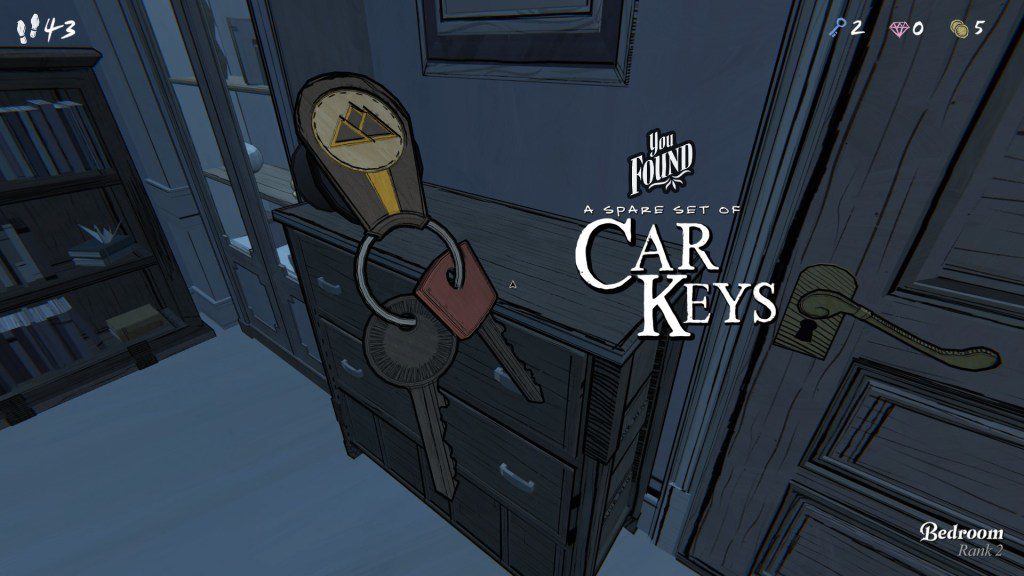A Newbie’s Guide to ‘Fallout’
This week, the year’s biggest video game adaptation arrives with Prime Video’s Fallout. From executive producer and director Jonathan Nolan (Westworld, The Dark Knight trilogy), and showrunners Geneva Robertson-Dworet and Graham Wagner, the series is among the most ambitious translations of a game to television. It’s pretty good, too.
With a world as deep as Fallout’s, whose lore spans more than half a dozen games since its inception in the Nineties, there’s a lot newcomers may be missing out on at first glance. With the show canonically serving as both prequel and sequel to the bulk of the series’ entries, there’s a lot of heavy lifting to do to set things up for viewers.
But fear not, because despite having some truly bizarre people and places, the world of Fallout is easily accessible even for those who haven’t played the game. So, strap on your Pip-Boy and ready some dogmeat; here’s everything you need to know about Fallout.
What is Fallout?
Washington, D.C., on a cloudy day, depicted in ‘Fallout 3.’
Bethesda
Published in 1997 by Interplay Productions, Fallout: A Post Nuclear Role Playing Game introduced players to a bleak version of post-apocalyptic America. Set in Southern California, now an irradiated wasteland, the game puts players in the shoes of a Vault Dweller, one of a group of many people who have lived underground in nuclear fallout shelters for generations since the bombs dropped in 2077. Tasked with fixing their community’s broken water recycling pump, the Vault Dweller must venture out for the very first time into the unknown to save their people.
Although set in 2161, the world of Fallout leans heavily into a retro, Fifties-inspired atompunk aesthetic. Prior to the apocalypse, the United States had gone down a separate path from the one we know as reality, retaining not just the general look and feel of that era well into the next century, but also its cultural sense of exceptionalism — and jingoism.
“It’s kind of ‘Eisenhower America,’” says Nolan, speaking with Rolling Stone. “[It’s] America that never went through Vietnam, never went through Watergate, that retained some of its — some people would call it ‘innocence,’ some people would call it ‘naïveté.’ Changes were made, things got better and different, but they didn’t follow the same path our world followed.”
One specific thing that’s different is that the U.S. engaged in a sort of Cold War with China, a decadeslong entanglement that ultimately led to the nuclear annihilation that sets the stage for the game’s environment. In the games, it’s presumed that China was responsible for dropping the bombs, but given that players only know the world they’re shown post-fall, the answer remains ambiguous, although it may be something tackled in more detail for the show.
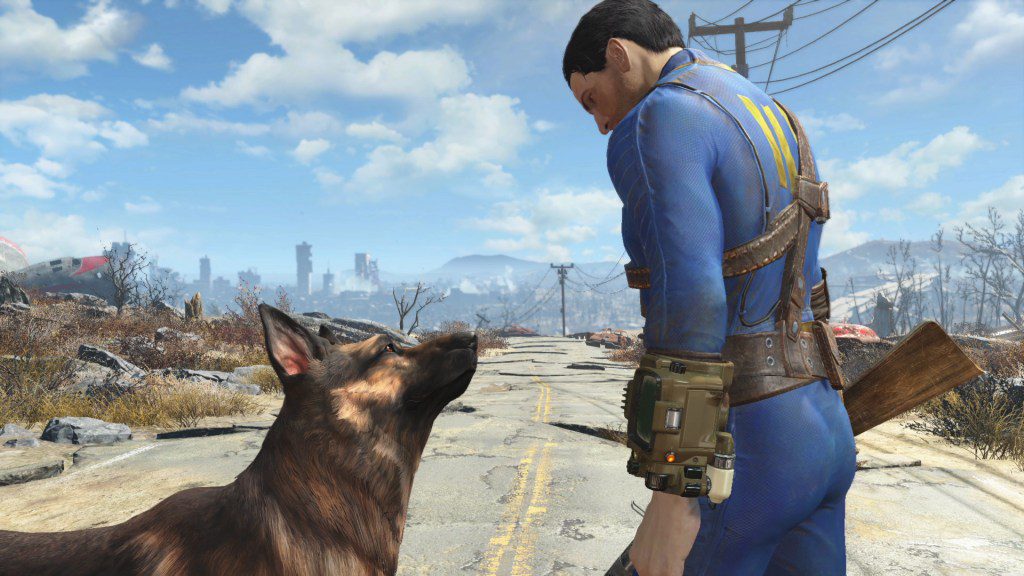
The best companion? A very good boy named, “Dogmeat.” (‘Fallout 4’)
Bethesda
Throughout the games, players engage in role play from the perspective of their individual character, so very little is known about the state of the world beyond the walled-off region they’re exploring — or even what the rest of the world looks like beyond North America. Some games, like Fallout 3, delve a little deeper into how skirmishes played out between the U.S. in China in places like Anchorage, Alaska, which where one of the main incursions occurred, but each story is primarily focused on the very personal story of a region and its inhabitant, rather than pulling back on a more macro level.
Although the overall mood sounds pretty dour, the tone set early on in the series is more akin to a satirical take on Mad Max than an overly dark introspective on the horrors of the new world. Embodying an old Western vibe in most of its locales, which span from California in Fallout 1 and 2, to the Capitol region in Fallout 3, and later even Boston and “New Vegas,” the story centers on warring factions in ways that are often more comedic than openly tragic. Exploring the world, players will often uncover bits of political and corporate propaganda that explain the world that was (and is) and see that, even after everything ended in war, the true nature of people has changed very little.
Factions are an important part of the game’s story, as most Fallout games allow players to meet and align themselves with different groups whose interests are usually in direct conflict. There’s raiders defiling small communities, the remnants of governmental and military organizations (like the show’s Brotherhood of Steel) vying for control of technology and the ideological support of the masses, and small militias just looking to protect their homestead. Who the player chooses to work with impacts the plot along a branching narrative, often at the demise of others, leading to a real sense of impact within the game’s world.
Which Fallout games should you play?
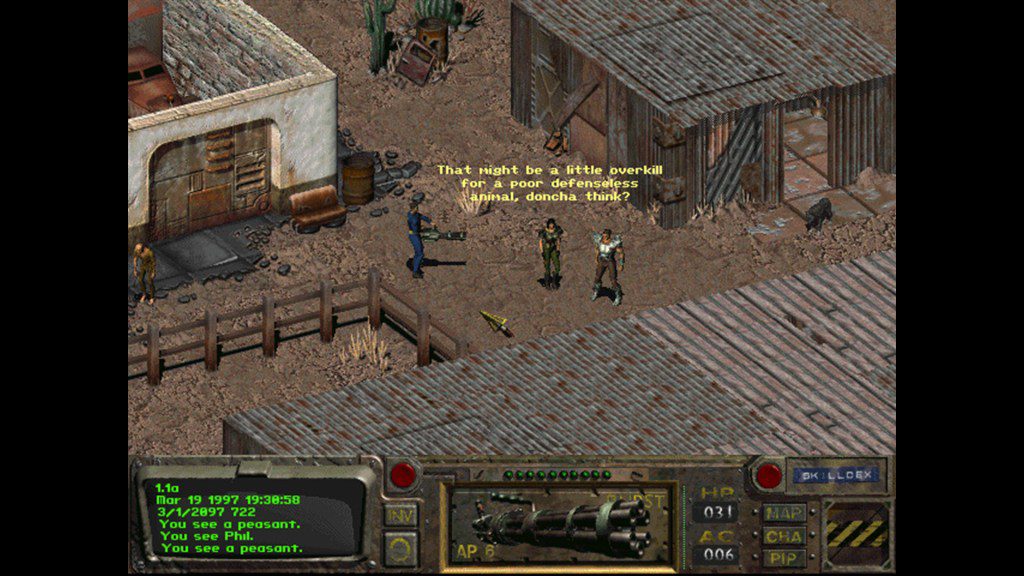
‘Fallout 1’ can be a chore to play for newcomers, but is an interesting time capsule.
Bethesda
With nine games released, including mainline entries and spinoffs, there’s numerous places to start for newcomers who want to experience Fallout firsthand. But picking an entry point may not be as easy as grabbing the latest title.
The original game, which was released for PC in 1997, likely isn’t the best bet. Developed by Interplay as a spiritual successor to its 1988 game, Wasteland, the first Fallout (as well as its sequel) play as isometric (read: bird’s-eye view) styled point-and-click adventure that feels exceptionally dated. Although they introduced many of the series’ best features like branching conversation trees and the turn-based targeting system V.A.T.S., they mostly feel like a cumbersome chore to control for anyone who didn’t grow up in the era of mouse-and-keyboard dominated, text-heavy gameplay.
That all changed in 2008 with Fallout 3, developed by Bethesda Softworks after they acquired the IP. This marked the series’ shift to the first-person shooter/exploration format most people would associate with the franchise today, and was the point at which Fallout went from being a cult favorite to massively popular video game IP.
Picking up Fallout 3 today, it still plays well. In the mold of other Bethesda games, like The Elder Scrolls V: Skyrim, it’s a perfectly good first-person exploration that should feel familiar to just about anyone who’s played an open-world title in the past 15 years. Trouble is, it isn’t easy to find unless you’re playing on PC or Xbox, where support for older titles is readily available through digital storefronts like Steam or Xbox Game Pass. For PlayStation users, streaming through the PlayStation Plus subscription service is available, but can be problematic for those without reliable high-speed internet, where bandwidth limitations can lead to dips in visual quality or delayed input caused by lag.

‘Fallout 3’ retooled the V.A.T.S. system to slow down the FPS gameplay for an RPG touch.
Bethesda
2010’s Fallout: New Vegas faces the same issue. But for those looking for the most hardcore version of the Fallout experience, it may be worth the trouble. Technically a spinoff, it plays much like Fallout 3, albeit with a darker tone and deeper focus on survivalist mechanics like avoiding dehydration in the wasteland. Generally considered a strong contender for the best game in the series by fans, it was developed not by Bethesda, but Obsidian Entertainment, a company founded by ex-members of Interplay and Black Isle Studios, developers of Fallout 1 and 2. That pedigree means many consider New Vegas to be a truer continuation of the original duology before the shifts in tone made by their successor, but in the grand scheme, it’s just a great companion piece to the third game.
Coming in cold, the best bet for new players would be one of the more modern titles, 2015’s Fallout 4 or 2018’s Fallout 76. Fallout 4, especially, plays like an updated version of 3 and New Vegas, but with streamlined controls that emphasize the first-person shooter elements and crafting over those game’s heavier RPG slant. That’s great news for casual players, who may be more attuned to Call of Duty or Halo than RPGs proper, but the game still has the heart and soul of a Fallout game and is a perfect entry point for anyone looking to hop right into the world after watching the series. It’s also readily available for PC, Xbox devices, and PlayStation 4 with a next-gen upgrade for Xbox Series X and PlayStation 5 coming later this month.
Fallout 76 is a tougher recommendation, as it totally deviates from the series’ previous focus on single-player role-playing and exploration, built instead as a multiplayer focused live service game to be played online. For fans of games MMORPGs like World of Warcraft, or squad-based games like Fornite and the recently released Helldivers 2, it’s a great way to dip your toes into the world of Fallout without a crippling feeling of isolation that hundreds of hours alone in the wasteland can induce.
With Fallout 5 in the works, but likely many years from actually being playable, the most viable options for experiencing Fallout, the game, will be one of these two.
Which Fallout game is the TV show based on?
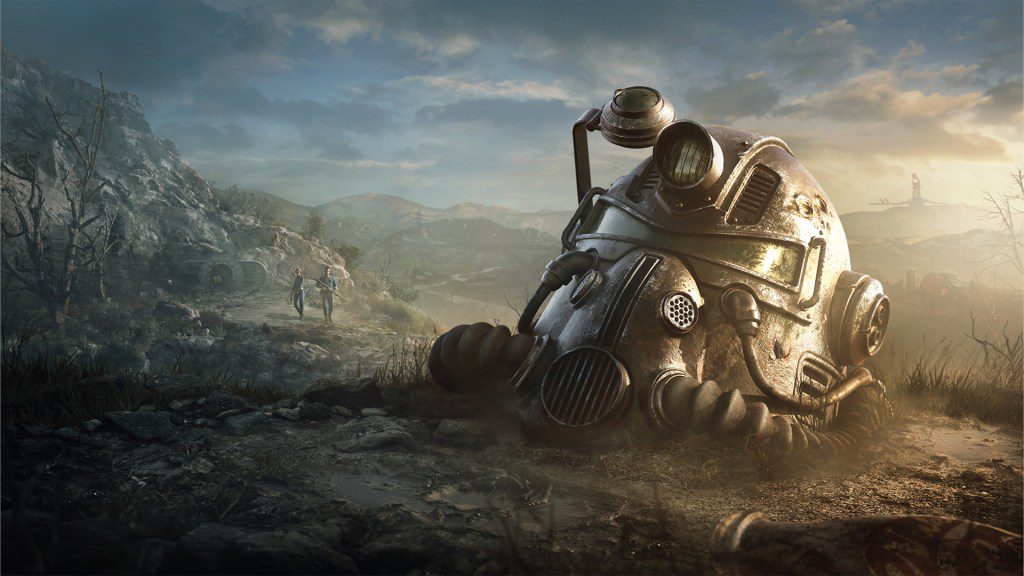
“War. War never changes.” (‘Fallout 4’ key art)
Bethesda
What sets Prime Video’s Fallout series apart from most video game adaptations is that it’s not really an adaptation at all, but rather its own canonical entry into the story laid out in the games. Setting up its own narrative, with three distinct protagonists as a way of morphing the games’ more open-ended gameplay into a linear story from differing points of view, players aren’t required to be totally familiar with the existing plotlines to get their bearings.
That said, as detailed in our recent set-visit breakdown, the production team behind the show went far deeper than merely stringing together Easter eggs and calling it a day. Having an understanding of the complex world and dynamic of Fallout lore can exponentially add to the experience of watching the show, as well as create an uncanny feeling that you’re watching the video games play out before you.
The show opens with a look at the world before the fall, providing context for what life was like prior to the events of the game in ways only Fallout 4 had done previously, but with a greater focus on the “how” and “why” the apocalypse happened. Jumping ahead, the bulk of the show is in 2296, placing it chronologically after every game in the series, some nine years after the events of Fallout 4 and over 130 years after the first game, which established California and some of the show’s specific locations before this point in the story.
Taking the framework of the games, one of the primary leads is Lucy, played by Ella Purnell, who is a Vault Dweller — the role typically held by the player. Outside of Lucy’s POV, there are other familiar factions at play — including the Enclave, the paramilitary organization that sees itself as the true continuation of pre-war government, and the quasi-religious group, the Brotherhood of Steel, who serve as major aggressors toward mostly everyone in their quest to preserve old-world technology. Both of these are factions players can align with over the course of different games.
There are also other teases that will reward fans of the games and will likely spark debate online over what directions the show will follow should it see (a very likely) second season. But when that second season might arrive is anyone’s guess.
But for now, there’s plenty to do and see in the existing world of Fallout. Whether it’s digging through the backlog to experience the series’ history or tuning into the show to see its future, there’s never been a better time to explore the wasteland.


